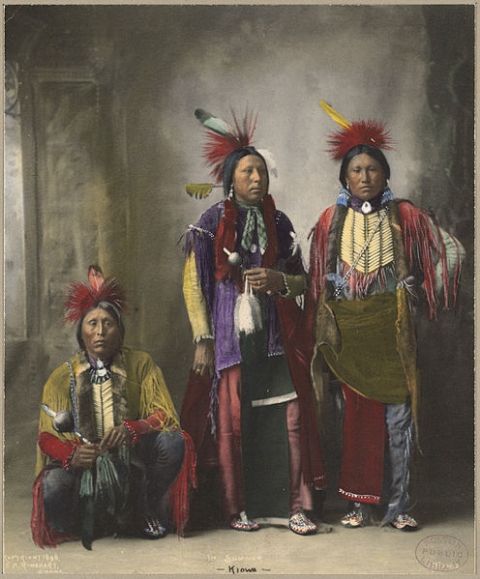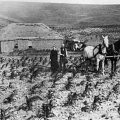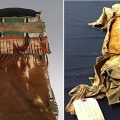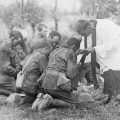
While the Kiowa today have a reservation in Oklahoma, their own oral tradition as well as that of other tribes tells of their migrations from Montana to the Southern Plains. Kiowa religion is based on a sacred power (dwdw), a force that permeated the universe and could be found in spirits, objects, places, or natural phenomena. This spiritual power permeates the universe, including the sun, the moon, and the stars. On earth, this power permeates the mountains, rivers, streams, plants, and animals. This spiritual power is neither good nor bad, but it can help or harm depending on the user.
There is a hierarchy of spiritual power: the spiritual power of predators is more powerful than that of their prey; the spiritual powers from above, such as the sun, are stronger than the earthly animals.
For humans, the spiritual power could be obtained through the vision quest. Through the successful completion of the vision quest, the seeker obtains a guardian or tutelary spirit. This special spirit gives instructions on how to paint the face, as well as imparting special songs, and guidance for making special amulets. Traditionally it was considered unlikely that a man could be successful in life without a guardian spirit.
The vision quest, usually done only by men, involved going to an isolated place and fasting wearing only a breechcloth and moccasins. A buffalo robe might be draped over the shoulders with the hair side out. The seeker would carry a black stone pipe with a long stem. For four days the seeker would fast, smoke, and pray, attempting to obtain a vision.
Among the Kiowa, successful vision seekers traditionally obtained spiritual power related to either curing or war. These two realms of spiritual power were generally mutually exclusive: one became either a great warrior or a great curer. For those who became curers, life was more difficult as there were both responsibilities and restrictions which came with the spiritual power. Typically, restrictions might include the need to avoid certain animal foods-bears, moles, or fish-or animal parts-brains or marrow.
Kiowa men who received war power often made war shields that symbolized the power they had received through their vision. These shields, along with the associated spiritual power, could be given to a son or sold to a friend.
Among the Kiowa, the ten sacred medicine bundles – the Ten Grandmothers – were very important. One of the functions of the medicine bundle priests was to adjudicate disputes. The bundles also had the power to cure the sick. Anyone in the tribe could make gifts to a bundle and to pray for it. Success in war was traditionally the most common supplication.
The eleventh tribal bundle among the Kiowa is the Taime or Sun Dance bundle which became the focal point of the Sun Dance. This medicine bundle is placed at the western side of the Sun Dance lodge where it symbolizes the spiritual powers of the sun and mediates between the people and these spiritual powers.
According to one story, the Kiowa obtained two Taime medicine bundles, one male and one female, about 1770 from an Arapaho man who had received them as a gift from the Crow. When the Arapaho man married a Kiowa woman the two bundles come into possession of the Kiowa people.
The Sun Dance was the only time in which the entire Kiowa tribe camped together. This ceremony unified the tribe socially and spiritually. Traditionally, the Kiowa Sun Dance was held between mid-June and mid-July and was not an annual dance: it was held only when someone pledged it. The keeper of the Sun Dance bundle selected the location for the dance and was the nominal head of the tribe during this ceremony.
The Kiowa Gourd Dance (Tdiepeigah) began as a spiritual gift from the red wolf to a Kiowa warrior who was separated from his war party. The dance honors the battles of the Kiowa warriors during their migration from the Northern Plains to the Southern Plains.




Leave a Reply